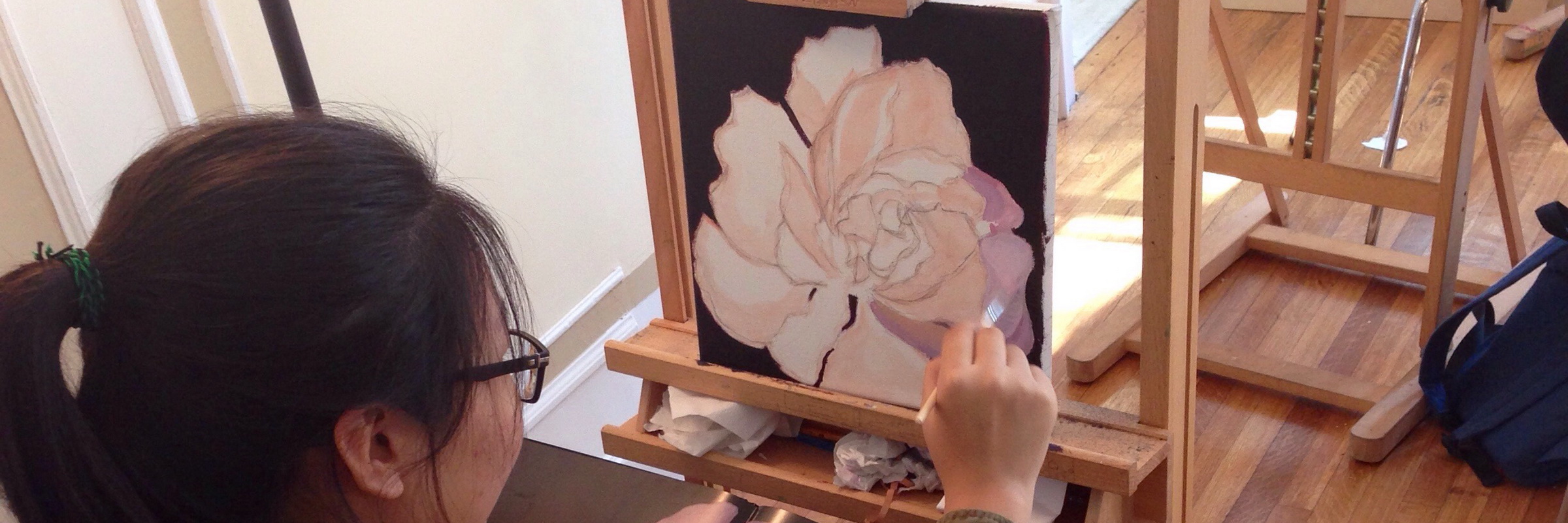
While the PRISMS Art Classes are strongly rooted in basic techniques and fundamentals, they also include innovative elements, such as a rotating schedule of visiting artists from a variety of artistic backgrounds, as well as studio, gallery or museum visits to New York City. The classroom is intended to be a laboratory of creative inspiration. Our teaching philosophy encompasses traditional (although the term traditional is hard to define in these days of global art aesthetics and practice), non-traditional, and unconventional approaches to art, including conceptual, performance, figurative (objective) and abstract (non-objective). Our teaching methodology encompasses a broad structure with varying approaches, which will be based on the needs of a particular student or group of students.
In accordance with our Visual Arts philosophy, we will work to ensure that each student masters basic techniques, tools, and ways of thinking about and seeing art. Our teaching methodology will address individual learning styles so that each student will develop his/her profile and style or vision. To enhance individual progress, we will develop specific assignments according to student’s needs (some students might need more drawing skills; some might need more color theory literature and others might need more conceptual or even unconventional approaches to art-making), through direct demonstrations, slide/PowerPoint presentations, group and individual critiques, artistic/aesthetic/theoretic readings and art articles that relate to the subject matter. Course a=objectives are to: Learn the basic elements and principles of drawing/painting; Understand the basic principles of linear perspective; Develop an understanding of contour drawing, depth, value & form of 2D surfaces; Demonstrate a basic understanding of chiaroscuro: smooth gradation, range of values, etc.; Develop the ability to effectively communicate about drawing/painting ideas and processes; Learn the basics of art history.
The advanced course will build on the knowledge and skills students learn at the basic level, while also focusing on enhancing the project-based learning that students will gain through other aspects of their overall PRISMS education. Each student will conceive of, research, propose and execute a major project, to be displayed in a school-wide exhibition at the end of the year. He or she will choose and execute the subject, medium, style, and other aspects of the project, under the guidance of the instructor. Course objectives include: Further develop knowledge and skills gained from the Basic Visual Arts course; Develop the ability to express via digital imagery knowledge of an important idea or theme by creating a short video for school-wide presentation; Further develop teamwork and collaboration skills by participating in a group project; Further develop analytic thinking and the creative process through researching the life and work of a professional artist; Further develop research, analytic, art history and studio skills by conceiving of, researching, and creating an independent project on a subject that reflects PRISMS’ core curriculum.
Music is a living language, and in this class we will cover the basics of musical notation and literacy. Topics covered will include pitch, rhythm, scales, modes, time signatures, intervals, chords, harmony, and tonality. Our approach will be both practical and theoretical; we will first learn conceptual topics, and then put them into practice through basic performance and composition. For example our study of scales and chord progressions will be reinforced by practice at the keyboard. Additionally, we will integrate a variety of topics by composing short phrases, melodies, and songs. Our goal is to become more literate and sensitive musicians.
Everyone has the potential to be musically creative, and this class is designed to help students discover and nurture their own musical creativity. In this class, we will engage in a variety of diverse musical activities and games that cultivate our ability to improvise. Together we will also explore more formal methods for creating original music. Students will also learn music software that will enable the creation of musical scores. Ultimately, students will be required to write a series of short musical compositions that will be shared in class electronically or through live performance. In order to enroll in the class, students must demonstrate a basic level of musical literacy and proficiency, as determined by the instructor.
The AP Visual Arts Studio course will be a year-long class offered to students who are seriously interested in the practical application of art. Students will work with diverse media, styles, subjects, and content. Students will be evaluated on the year-long portfolio, submitted at the end of the year. The course consists of three possible portfolios: Two-Dimensional Design, Three-Dimensional Design, or Drawing, corresponding to the most common college foundation courses. Students’ work will be informed and guided by observation, research, experimentation, discussion, critical analysis, and reflection, relating individual practices to the art world. Students will be asked to document their artistic ideas and practices to demonstrate conceptual and technical development over time. AP Studio Visual Art will support students in becoming inventive artistic scholars who contribute to visual culture through art making.